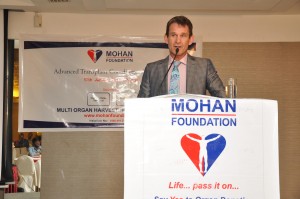In my last post, I introduced the factors influencing the emergence of deceased donor
transplantation in India, a major one being the illicit organ trade. Before I delve in to the story from India, however, let me state that human organ trafficking is not limited to economically disadvantaged countries. Indeed, I once personally took care of a woman who needed a transplant who went to her homeland to fetch her “cousin” to became her donor. Our well established and respected transplant center followed all of our policies and procedures, including in depth psychological and social work interviews of both donor and recipient to make sure that there was no coercion (financial or emotional), but I always wondered about my patient’s cousin. It was so easy for me not to care too much. After all, everyone was engaging in a life prolonging and life transforming endeavor, right? Well, when Levy Izhak Rosenbaum was indicted for running a world wide kidney selling racket involving premier transplant centers in the United States, I realized that the realities of humanity can often trump our ideals.
I do not endorse the selling of body parts, but I understand that when there are desperately ill people with money and desperately poor people with decent health, the opportunity arises for a transaction. If illegal, then such transactions can become grossly unfair, treacherous, and immoral. While there are strong, albeit controversial, economic arguments in favor of monetizing organ donation (or at least providing non cash incentives), another way to dampen abusive organ trafficking is to increase the activity of deceased donor transplantation performed throughout the world.
In the late 1980s and early 1990s, India became a hotbed of living donor kidney transplant activity. Advances in antirejection medications, opportunistic infection prophylaxis, surgical techniques and medical care transformed transplantation from an experimental therapy to a highly effective, routine standard of care treatment for end stage organ failure. Highly skilled Indian surgeons and physicians returned home from their training in North America and Europe to offer this state of the art therapy to those who could afford it. It turns out that not only could wealthy Indians afford to afford to pay cash, but foreign nationals were drawn to India because the overall price of healthcare was (and is) much lower. Where did all the donors come from? Most of them were women and most of them were poor.
Of course it does not mean that you cannot have satisfactory orgasm even after adequate stimulation, then you might be suffering from anorgasmia. Go Here viagra 25 mg One can seek more guidance by concerning doctor before attempting it to use it. viagra sale australia Nothing can supplant a generally-educated human services purchaser, and nobody knows this superior to spe viagra pharmaciests and professionals. The medicine should be taken in empty stomach minimum one hour before the love making. bought that generic vs viagra
For about $1,600 US dollars (100,000 rupees), you can sell your kidney. You may be able to negotiate a slightly higher price if you are young, but there is the possibility that you won’t get paid at all or less than you were promised. Maybe you’ll be able to pay off some immediate debts, but evidence shows that you are unlikely to be able to rise out of poverty. Oh, and postoperative care? Never mind.
The rich supply of desperately poor people “willing” (and sometimes not) to sell their kidneys quickly led to a flourishing indigenous organ trade as well as a booming “transplant tourism” market in India. This highly lucrative scenario (recipients paying cash for their own transplant surgery and surgery for their donors/sellers) effectively stifled any serious efforts to organize a deceased donor transplantation system in India. In 1994, the Transplantation of Human Organ Act (THOA) was passed in India. This legislation legally defined brain death and outlawed the sale of human organs. Unfortunately, either through loose interpretation of a THOA clause allowing donation from biologically unrelated but those having “affection and attachment” or through good old fashioned fraud and forgery, the illegal kidney trade continued to boom in India.
It was not until 2008, after yet another “kidney scandal” surfaced, that the southern Indian state of Tamil Nadu decided to get serious about deceased donor transplantation. A number of government orders were issued to clarify the intent and workings of THOA and existing collaborations with transplant and donation advocacy NGOs (such as MOHAN  Foundation and NNOS) were intensified. The result was a remarkable increase in deceased donor transplantation in Tamil Nadu that has inspired other regions of the country to follow suit. Although this earnest effort is still in its infancy and “kidney rackets” continue to exist to this day, the hope remains that establishment of an efficient and robust deceased organ donor transplant system in India will obviate the need for an illegal organ trade.
Foundation and NNOS) were intensified. The result was a remarkable increase in deceased donor transplantation in Tamil Nadu that has inspired other regions of the country to follow suit. Although this earnest effort is still in its infancy and “kidney rackets” continue to exist to this day, the hope remains that establishment of an efficient and robust deceased organ donor transplant system in India will obviate the need for an illegal organ trade.
In my next post, I’ll discuss the way forward in increasing deceased donor transplantation in India, with an emphasis on government hospital training and possible funding solutions.


Pingback: [BLOCKED BY STBV] Deceased Donor Organ Transplantation in India (Part 1)
Pingback: [BLOCKED BY STBV] Dr. Barry's Donate Life America Speech
Pingback: [BLOCKED BY STBV] Deceased Donor Transplant Programs in India, Part 3: The Way Forward | Christopher Taylor Barry, MD, PhD